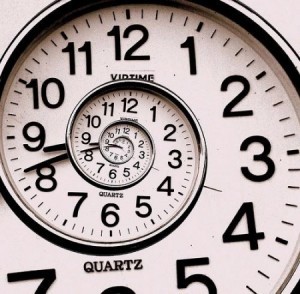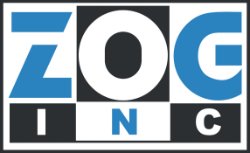Subscribe to the Zog Blog to get news Delivered straight to Your box!
Newsletter Signup
Recent Posts
Archives
Archives
- November 2025 (1)
- September 2025 (1)
- May 2025 (1)
- March 2025 (1)
- November 2024 (1)
- October 2024 (1)
- August 2024 (1)
- July 2024 (1)
- June 2024 (1)
- May 2024 (1)
- December 2023 (2)
- November 2023 (1)
- August 2023 (1)
- June 2023 (1)
- May 2023 (1)
- April 2023 (1)
- December 2022 (4)
- November 2022 (3)
- October 2022 (2)
- September 2022 (2)
- August 2022 (3)
- July 2022 (2)
- May 2022 (3)
- April 2022 (2)
- March 2020 (1)
- November 2019 (1)
- October 2019 (2)
- September 2019 (3)
- August 2019 (2)
- July 2019 (5)
- June 2019 (3)
- May 2019 (2)
- April 2019 (1)
- March 2019 (2)
- August 2018 (2)
- July 2018 (1)
- June 2018 (1)
- May 2018 (4)
- April 2018 (5)
- March 2018 (2)
- February 2018 (3)
- January 2018 (3)
- December 2017 (3)
- November 2017 (2)
- October 2017 (3)
- September 2017 (4)
- August 2017 (2)
- July 2017 (4)
- June 2017 (4)
- May 2017 (5)
- April 2017 (4)
- March 2017 (3)
- February 2017 (4)
- January 2017 (5)
- December 2016 (4)
- November 2016 (5)
- October 2016 (4)
- September 2016 (3)
- August 2016 (4)
- July 2016 (1)

Why You Are Waiting On Your IT Help Desk?
When you’re forced to wait on hold and keep hearing “your call is important” over and over, don’t you feel like just hanging up? And if your computer problem is simple enough for a technician to fix— like a password reset or a printing issue—aren’t you tempted to just try and find a way around dealing with your unresponsive help desk? Even simple problems can be emergency issues—issues that prevent your users from getting critical work finished. In my book, having to wait on hold for a help desk technician—especially when your work depends on it—is unacceptable.
Your help desk needs to keep on top of critical KPIs to really be effective to your operations. And that’s why every IT help desk should be thinking about average wait time as a metric they are constantly monitoring.
What is average wait time?
Pure and Simple. It’s the average amount of time either you or one of your users has to wait to speak with a technician. From the moment you dial in to the time your call has been answered by someone qualified to help. This is a critical IT help desk KPI—your IT help desk manager should be working to keep wait times as low as possible.
Why is average wait time so important?
User productivity and job satisfaction—take a minute to think about this. If you had to get a report done, send an important email or do something else that is critical to you performing your job—and the only thing keeping you from getting it done was some technical problem your IT help desk could easily fix—how would you feel waiting on hold until the next technician is available. Not know whether your issue will get fixed in time for you to meet your deadline. Or thinking about other things unrelated to work, losing focus on what you were originally doing (and supposed to get done). The whole reason why your users are calling in is because they have immediate IT support issues and need help. Period. If they are waiting on hold, they’re not doing their work and you’re likely not getting results.
Average wait time is also related to call abandonment rates—this can lead to even more long term technical headaches. What you need to know is that if a user hangs up after waiting for your help desk, more than 40% never call back. That means if you have long help desk wait times (which in some businesses may be as little as 90 seconds!), you likely have a large portion of users struggling to get work done or fixing their own problems because they simply don’t want to wait on hold for a technician!
And even if they call back or get through to your help desk technician, they’re less likely to be cooperative and effectively communicate with the technician to resolve an issue. Instead, you’ll find your users angry, upset and frustrated with their technology, your IT support staff and with their overall job satisfaction.
Keep in mind that an acceptable average wait time varies considerably by industry and the nature of the problem, but on average, your help desk should be expected to answer a call live by a technician within 20 seconds (4 rings).
Why are your users waiting on hold for your IT help desk?
More often than not, long wait times are because your help desk isn’t well-staffed at high volume times of the day. Most often staffing issues are related to your help desk being understaffed, but sometimes having inexperienced help desk technicians with little understanding of how to use documentation or little training on working a help desk line and effectively handle calls, leaving your users to wait on hold.
So how can you reduce wait times your users are experiencing?
There are a variety of ways of optimizing your help desk towards low wait times, but here are a few of the big hitters:
- Find your chokepoints— where in your IT help desk call process lead to bottlenecks? What time of day or what days of the week do you notice intolerably long waits? Identifying where you have problems is probably one of the biggest starting points to finding an appropriate resolution.
- Focus on user expectations— if your help desk creates a good rapport with your users, they are more likely to be forgiving when it comes to waiting a few extra rings at times. If they get consistent service and get the ear of attentive help desk staff, you are more likely to have less frustrated users that end up abandoning their help desk calls. Remember, your help desk needs to stay consistent—if they start the week responding calls within 3 minutes and by Friday your users are waiting 25, you probably need to visit how consistent an experience users have when getting issues resolved.
- Staff appropriately—analyze your call history data to determine when peak times occur within your business and staff accordingly. Most often, there are a few peak times during the day that require a considerable larger help desk staff than most times. The hard part with having a well-staffed help desk at critical hours is paying for additional staff even when there is little work for them. Have contingency plans is your help desk technicians are out sick or on holiday. A seamless user experience is one of the biggest ways to keep your staff.
Realize by using an outsourced help desk like ZogDesk [link to help desk], we’ve already established processes to eliminate chokepoints, give your users consistent experiences with sufficient technicians at our office attending calls 24/7/365—so that you don’t have to pay for and manage an overstaffed or under-utilized IT help desk.
To make your help desk work for you, you really need to invest in exploring how to optimize average wait times. Do you have enough staff at all hours of the day? Do you have the bandwidth to identify root causes of long help desk wait times? Contact Us TODAY for a free help desk health assessment.


Leave a Comment
Your email address will not be published. Required fields are marked *